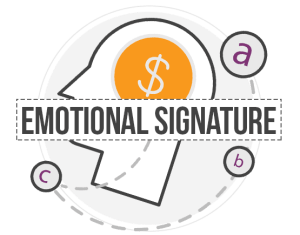Beyond Philosophy did research late last year with our clients and within the marketplace to sort out what business wants in the next decade. The results showed the mantra in business today is growth. However, defining business growth is essential here because it will dictate how you go about gaining it.
We discussed what growth is to organizations and how to approach getting it in today’s marketplace on a recent podcast [TL1]. We also discussed how your Customer Experience plays into the mix to help you facilitate customer-driven growth.
Focus on Unmet Needs to Improve Business Growth
Business Growth has always been at the heart of the Customer Experience movement. Nearly 20 years ago, when I started Beyond Philosophy and before Customer Experience was a well-known concept, my motivations were to create a competitive differentiator that would get more business for my clients. Treating your customers well and giving them what they want is at the heart of every sales manager’s action and marketing department’s message.
However, business is also all about return on investment (ROI). When a company invests $1, they want to make at least $2 back for their trouble. Therefore, if you dedicated a resource to fostering growth, you expect that you will get the results you invested in it to get it.
Business Growth has been a challenge for many businesses. The competition is fierce in business today. Innovation to imitation is down to weeks. Organizations face the challenge of launching new products and services because commoditization fueled by the massive growth in Internet commerce leads to increased competition in decreased timescales.
Business Growth Types
Therefore, how do we get growth? Where do we get new customers? Before we can answer these questions, let’s take a closer look at the three types of growth that exist in the marketplace:
- Traditional Growth: This type of growth is what many people picture when you say the word, and it includes customer retention and customer development activities. Traditional growth includes improvements in functionality in a rational way, e.g., faster processors in technology, new delivery times, or improved networks or network access for telecommunications, and other things along these lines.
- New Sales Growth: This area includes increases in sales, market share, or new customer acquisition. New Sales Growth includes expanding your offerings to capture a new type of customer. Examples could be Apple moving from equipment and into entertainment, or Dyson moving from vacuums into fans.
- Experience Growth: This type uses the Customer Experience to foster customer-base increases in the organization. By providing an experience that meets the needs of customers and potential customers, the organization increases its sales. Another term we could use to describe this third area is customer-driven growth.
Customer Driven-Growth
Customer-driven growth is what we do at Beyond Philosophy and have been doing it for nearly the past 20 years. We use improving Customer Experiences to meet the needs of customers so that they want to do business with one company over another. An example I use many times in my presentations is our work with Maersk Line. Maersk is the largest container shipping company in the world. They enlisted our global Customer Experience consultancy to improve their Net Promoter Scoreâ (NPS)* by 40 points over 30 months, which led to a 10 percent rise in shipping volumes. Also, RICOH Canada printers hired us to help them increase their NPS by 34 points over 30 months, which led to a 10 percent rise in printer sales. Moreover, RICOH did this in a declining market for printer sales overall.
You gain customer-driven growth when you improve your experience. Offering an improved experience addresses the emotional, subconscious, psychological needs customers have and look for in a Customer Experience. In other words, if you improve your Customer Experience, you will enhance your customer-driven growth.
You might have heard me mention how Forrester, a global research company, predicts that one in four Customer Experience professionals will lose their job this year. There are a couple of contributing reasons for this prediction, including a lack of focus on return on investment (ROI) for Customer Experience efforts and not measuring the growth these efforts produce. However, a third reason is that people have taken on Customer Experience without a goal in mind. In other words, when they invest a dollar in the Customer Experience, they do not have a plan to or a way to show how they get that money back through customer-driven growth.
Unmet Needs Gain Business Growth
All businesses need to focus on customers’ unmet needs to gain growth. Now, of course, some unmet needs are not realistic in a business sense, so those will remain unmet. For example, if people want a premium product but want to pay less than it costs to make to get it, a business could say no to that, and that would be the right thing to do.
However, hidden unmet needs exist that are far more realistic that we can address. For example, we did work with Memorial Herman Hospital System in Houston many years ago that wanted to improve their patient experience. The initial research revealed that patients wanted the doctor to spend more time with them. It sounds reasonable enough that patients would want that. It is difficult to do in today’s medical climate, but understandable at a surface level.
Then, we undertook our specialized research, which looks below the surface of what people say they want and reveals what they really want, called the Emotional Signature®. Our analysis revealed that while patients said they wanted to spend more time with the doctor, the actual unmet need was more subconscious than that. What patients meant was they wanted to feel like the doctor was listening to them.
Now that we had revealed the actual unmet need, the hospital system could address it. The hospital administrators learned a couple of things in the experience that were contributing to patients’ unmet needs. The doctor spent much time inputting information to the computer system. Moreover, doctors had no training on how to listen to people. Therefore, the actions the hospital system took were much different (and less expensive) than the steps the hospital would have taken to get doctors to “spend more time” with patients.
The hospital system is an example of finding unmet needs in your customer base, but there are unmet needs outside of your core in the market. You should also examine unmet needs in the market, too, and just like the ones in your customers, determine if they will drive growth. Then you can ask useful questions that will help your organization gain growth, like:
- What’s the cost of us moving into and serving that market segment?
- How much market share or profit is potentially available here?
- What’s the lifetime value of a customer when you compare it to the customer acquisition costs?
Practically speaking, there are four things that you should do to use unmet needs to gain potential growth:
- Determine if there is an unmet need in the marketplace or customer base. Complacency in business has rarely led to something suitable for an organization as far as gaining growth.
- Look for subconscious needs or desires that lie just under the surface of customer consciousness. Part of the challenge at this point is to differentiate between what customers say they want and what they really want, as in the hospital system example I shared.
- Analyze whether people outside your customer base share this unmet need in the marketplace. The potential for growth outside of your customer base is an essential consideration when choosing a direction for your organization.
- Calculate whether that unmet need will help you gain growth. In other words, does it make financial sense to invest in this area, and can it potentially attract prospects in addition to enhancing your Customer Experience?
When we have grand strategic ventures for our Customer Experience, but we don’t determine the practicalities of it, we get ourselves into trouble. Many ways exist to gain growth. Finding the ones that make sense for the organization is vital so you can adopt a strategy that will, you know, work.
Focus is preferred here, too. If you try to go off in several different directions at once, you are not going to get anywhere. You won’t have any specific actions or initiatives and the necessary support for them that they need to be successful. Therefore, defining set avenues for customer-driven growth backed by strategic decisions about what you can do to grow in sustainable and responsible ways is the only way to go.
To hear more about Meeting Customers Unmet Needs in more detail, listen to the complete podcast here.
 What customers say they want and what they really want are often different things. It is vital to know what drives value for your organization. Our Emotional Signature research can tell you where you are compared to other organizations and what to focus on to drive value for your customers. To learn more, please click here.
What customers say they want and what they really want are often different things. It is vital to know what drives value for your organization. Our Emotional Signature research can tell you where you are compared to other organizations and what to focus on to drive value for your customers. To learn more, please click here.
Colin Shaw is the founder and CEO of Beyond Philosophy, one of the world’s leading Customer experience consultancy & training organizations. Colin is an international author of six bestselling books and an engaging keynote speaker.
Follow Colin Shaw on Twitter @ColinShaw_CX


